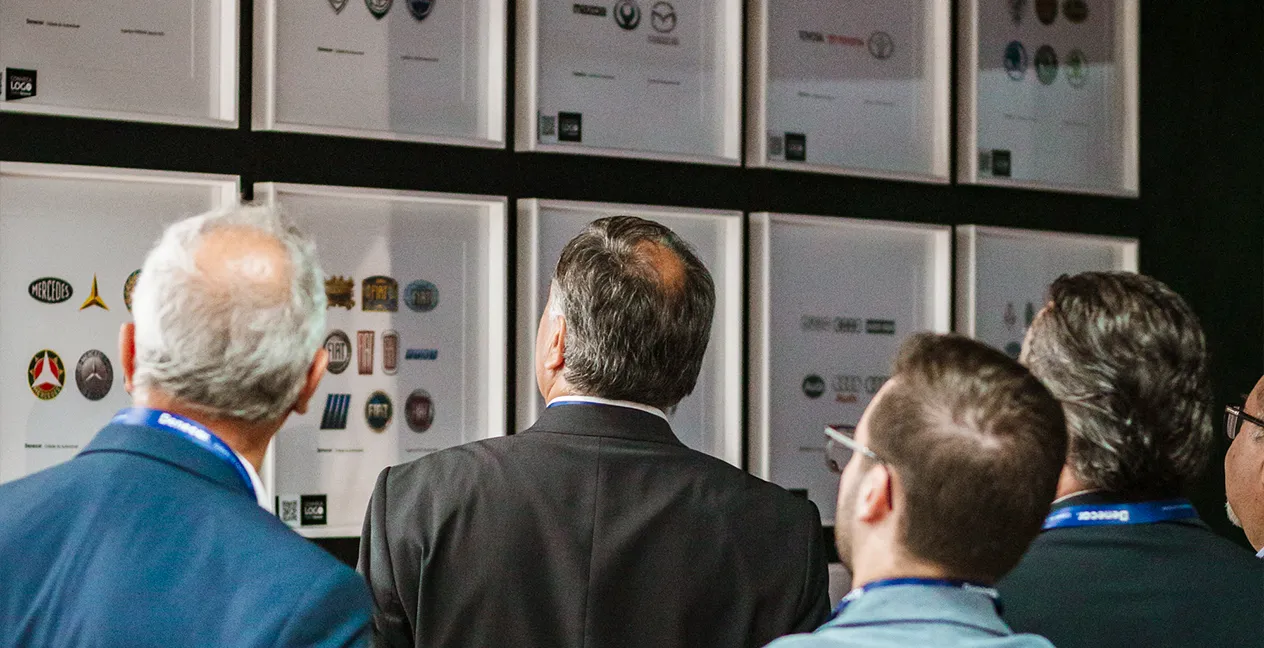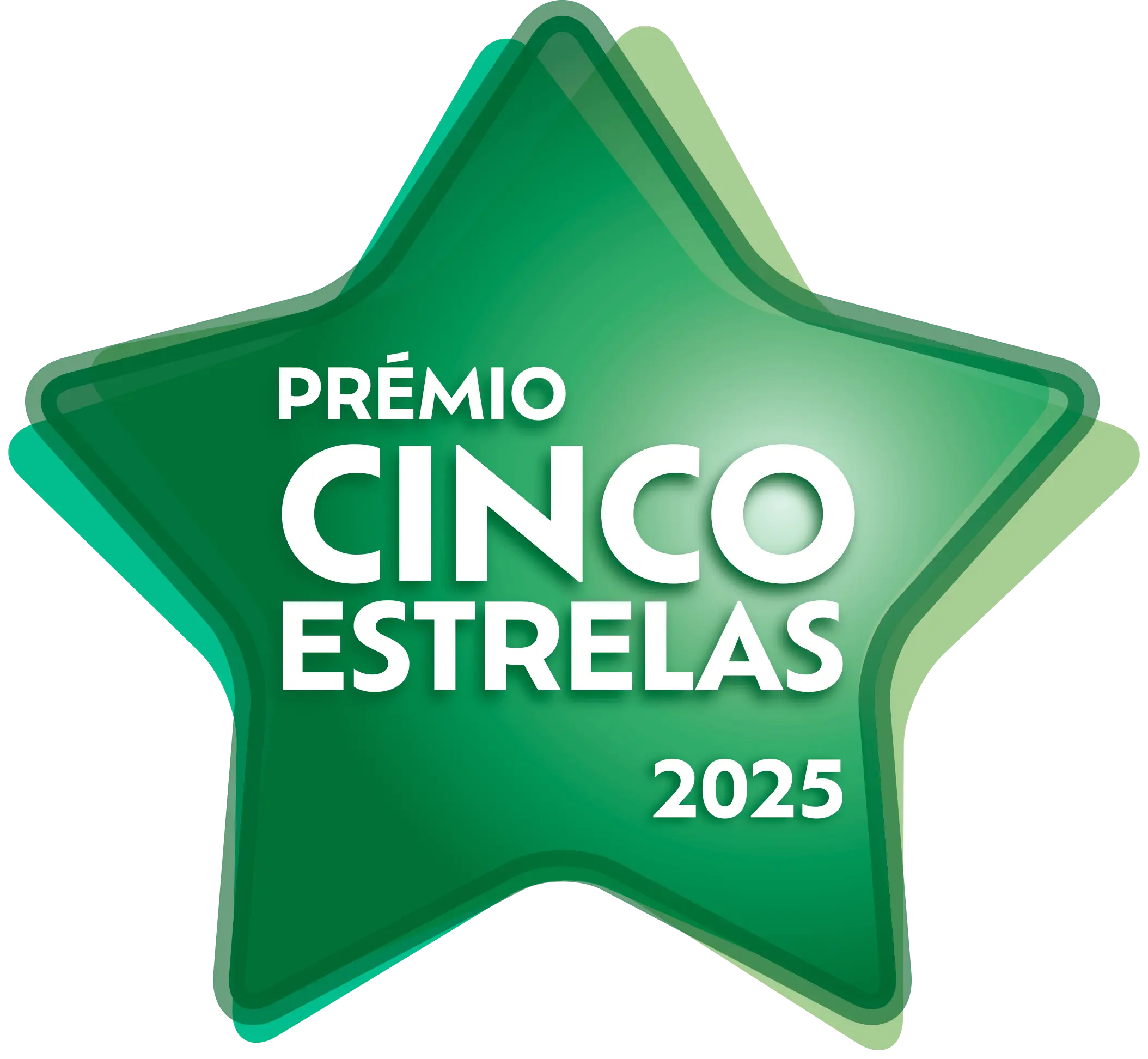
Created by David Santos at Monday, 26 March 2018
Meaning of car brand symbols
From stories of self-styled barons, to Zodiac signs and even love letters, the origins of brand logos are many and curious.
.
Here's what the symbols of car brands mean...
.
Abarth - The scorpion represents the zodiac sign of the founder, Horacio Abarth, joined by the Italian 'tricolore'. The red used refers to the color most closely linked to motorsport on transalpine soil.
Alfa Romeo - Adds to Anonima Lombarda Fabbrica Automobili the name of the man who bought the company in 1915.
The symbols are linked to the city of Milan, as the cross is its official emblem and the snake swallowing a Muslim refers to the coat of arms of the House of Visconti, which led the city for centuries.
Alpina - With its name referring to the "alpine" location of its first workshop, the interior features a Webber carburetor and crankshaft.
Aston Martin - The wings are the representation of speed, with some saying that the inspiration for this image came from Bentley's compatriots.
Audi - The history of this symbol is famous, and it is said to have originated from the merger of four German manufacturers.
Bentley - The wings evoke its birth as an aircraft engine factory during the First World War. A curiosity is the disparate number of feathers on each side of the symbol. If you count them, you'll see that one side has one too many... The silver tones represent sophistication.
BMW - The black exterior has its origins in the RAPP. The interior, which many link to a double helix, actually has to do with the colors of the state of Bavaria.
Bugatti - The combination of Ettore Bugatti's initials gives rise to the logo. The dots surrounding the oval have been linked to two motifs, indicating the grandeur of the brand or referring to the cables placed in the engines due to the absence of joints.
Caddilac - A curious story, as it derives, like the brand name, from the founder of Detroit, who called himself "Sir Caddilac". This character, Antoine Laumet de la Motre, even created a personal coat of arms, which appears here in combination with the gold quarters and black stripes introduced in 2000.
Chevrolet - The bow tie that symbolizes it appeared two years after the birth of the brand, and is inspired by an advertisement that Louis Chevrolet saw in a newspaper.
Citroën - The double chevron is famous, evoking the fruits of André Citroën's trip to Poland, where he obtained a patent for the bi-helical gear.
Ferrari - It has the colors of the flag at the top and the yellow refers to the city of Modena. But the Cavallino is the most curious reason.
It all originated with World War I fighter pilot Francesco Baracca, who used it on his plane. The pilot's mother told Enzo to use it on his cars because it would bring good luck. Apparently, she was right...
Fiat - It's a simplistic style, reminiscent of Fabbrica Italiana Automobili Torino. The current look, preceded by visuals such as the four stripes and the four squares with the letters, was launched in 2006 and bears similarities to the image introduced in 1932.
Ford - One of the most enduring, as this design, with the blue oval stylistically surrounding Mr. Henry's signature, has been used on the brand's models since 1909.
Hyundai - This "H" stands for a stylized handshake, symbolizing the relationship of trust established between the brand and its customers.
Infiniti - There are two hypotheses that have been put forward for this style. In one analysis it represents a highway to the future, while in the other "stylistic current" it is like Mount Fuji, signaling the highest Japanese quality.
Jaguar - The brand was born as SS (Swallow Sidecar). And, as you can easily see, it changed its name in 1945 to distance itself from the Nazi paramilitary organization. The Jaguar was then chosen, as it had already been used in a model, and the leaping feline indicates the grace of the models and movement in front of the brand.
Jeep - Although usually only the lettering with the name is used, there is a longer variant that refers to the front of the cars, with its iconic combination of grille and rounded optics.
Kia - The lack of the "dash" in the A serves to distinguish it, while the colour combination combines white (elegance, transparency and purity) with red (a rapid desire to evolve and, in the oval, globalization).
Koenigsegg - Christian von Koenigsegg's ancestors are from the Swabian region, so the gold and red pattern recalls the colors of this area of southeastern Germany.
Lada - Originally only used on export models, its name is linked to Viking ships. Yes, the ones that, if you look at the bottom of the logo, are drawn there. The blue used indicates the seas crossed by these vessels.
Lamborghini - As with Horacio Abarth, here the bull was Ferrucio Lamborghini's zodiac symbol. It also represents the brute force of his cars and is inspired by his trip to Seville to see the 'Miura' race in 1962.
Land Rover - In the green shape, surrounded by white contours, the two triangles that refer to the motto "Above and Beyond" stand out and some say they replace the Z that linked the two names in the previous symbol.
Without official confirmation, one rumor indicates that the oval symbol derives from the shape of a tin can that the designer ate while drawing.
Lotus- There is no official confirmation, but rumors point to the way the founder of the brand looked at this flower as a representation of Nirvana in Buddhism. The British Racing green indicates Lotus' homeland and the yellow evokes the bright future. The jumble of letters are the initials of Anthony Colin Bruce Chapman.
Maserati - The trident is a reminder of the God of the Seas, Neptune, and his attributes. The use comes from the statue placed in the fountain in Piazza Maggiore in Bologna.
Mazda - The deity of the good side of Zoroastrianism, Ahora Mazda was chosen because it represents, among other things, wisdom. The name is also the Anglicized translation of the name of the founder, Jujiro Matsuda. The current symbol has a stylized M in which the sides look like wings, an expression of the brand's freedom.
McLaren - It was born with the memory of a Kiwi, a bird typical of New Zealand, Bruce McLaren's country of origin. Although many say that the current symbol still has influences from the one designed in the 1980s, due to the link with Marlboro, the current version is presented as an expression of the "aggressive brands found in predatory animals.”.
Mini - Recently changed, it retains the wings on the sides as an indication of speed and freedom of expression. Its inspiration lies in the brand's origins, while the more minimalist format currently implemented expresses a forward-looking spirit focused on the essentials.
Mercedes - The postcard sent in 1870 by Gottlieb Daimler to his wife said that "one day this star will shine at the top of our triumphant factories". It was used for the first time in 1910 and represents Land, Sea and Air.
Mitsubishi - The three diamonds chosen by the founder, Yataro Iwasaki, represent the lozenges of his family's symbol and the three-leaf clover of his first employer, the Tora clan.
Morgan - Without official confirmation, the wings are said to be inspired by the owner of the original 'Aero', Captain Albert Paul, who said that this 'Three Wheeler' was the closest to flying he had ever come across.
Nissan - The abbreviation for Nihon Sangayo is surrounded by a circle evoking the Japanese flag. The choice of gray, after 1990, is a representation of modernity.
Mini - Recently changed, it retains the wings on the sides as an indication of speed and freedom of expression. Its inspiration lies in the brand's origins, while the more minimalist format currently implemented expresses a forward-looking spirit focused on the essentials.
Mercedes - The postcard sent in 1870 by Gottlieb Daimler to his wife said that "one day this star will shine at the top of our triumphant factories". It was used for the first time in 1910 and represents Land, Sea and Air.
Mitsubishi - The three diamonds chosen by the founder, Yataro Iwasaki, represent the lozenges of his family's symbol and the three-leaf clover of his first employer, the Tora clan.
Morgan - Without official confirmation, the wings are said to be inspired by the owner of the original 'Aero', Captain Albert Paul, who said that this 'Three Wheeler' was the closest to flying he had ever come across.
Nissan - The abbreviation for Nihon Sangayo is surrounded by a circle evoking the Japanese flag. The choice of gray, after 1990, is a representation of modernity.
Opel - Also recently updated, with "more clarity and simplicity", but keeping the focus on the lightning (from the German Blitz) that recalls the "Blitz" model, a van that helped the brand survive after World War II.
Peugeot - Already used before the brand entered the automotive world, one of the reasons given is the lion prancing on the coat of arms of the Franco-County where Armand Peugeot was born.
Porsche - The connection to the city where it is based is obvious. The name in the middle and the horse, from the Free State of Wurttemberg, founded after the dissolution of the Kingdom of Germany in 1918, with Stuttgart as its capital. The triple crests are from the Swabian region, and the red and black stripes to the Duke of Wurttemberg.
Renault - The original circular symbol was changed in 1925, as the diamond looked better in the center of the grilles. And this diamond became one of the most easily identifiable in the automotive world.
Rolls-Royce - The desire for a more expressive symbol led Lord Montagu of Banlieu to ask his friend and sculptor, Robinson Sykes, for a hood ornament. And so the Spirit of Ecstasy was born, whose muse was the Lord's secretary and mistress, Eleanor Thornton, with her robes fluttering in the wind.
Skoda - Since 1923, the arrow has stood for precision and the wings for freedom. The green introduced in 1990 affirms the "new beginning" for the Czech brand.
Smart - One of the easiest to explain and understand. It comes from the "C" for compact with an arrow representing progress.
Subaru - The name has something to do with "coming together" and so does the current symbol. It derives from the Pleiades that make up the constellation Taurus and the current presentation shows Fuji Heavy Industries as the big star and the small ones the various companies that have merged to create the consortium that owns Subaru.
Tesla - It's not a "T", although it looks like one... The main motif is actually a cross-section of an electric motor. This is because, just as the name of the company comes from Nikola Tesla, the engine of the first model, the Roadster, is also the result of an original sketch by the inventor
Toyota - The ovals represent the heart of Toyota, forming a T and symbolizing the mutual relationship and trust.
Volkswagen - Indicating the initials of the People's Car, the symbol was changed in 1945 by the British, given the links of the first symbols (and that of KDF before 1937, in the following photo) with the Nazi party.
Volvo - The round symbol with an arrow evokes the Roman god of war, Mars. And also weapons, because of its connection to iron, due to the fact that the brand's founder worked in the metal industry. And, from there, to take the characteristics of strength, safety and durability of these materials.
.
If you want to know more about the history of the logos of the different brands, Benecar has a dedicated playlist, "Conheça Logo com a Benecar":
.
.
.
Source: AUTOCAR, CAR BRAND NAMES, TURBO.PT
Translated with DeepL.com






